
Lot 446
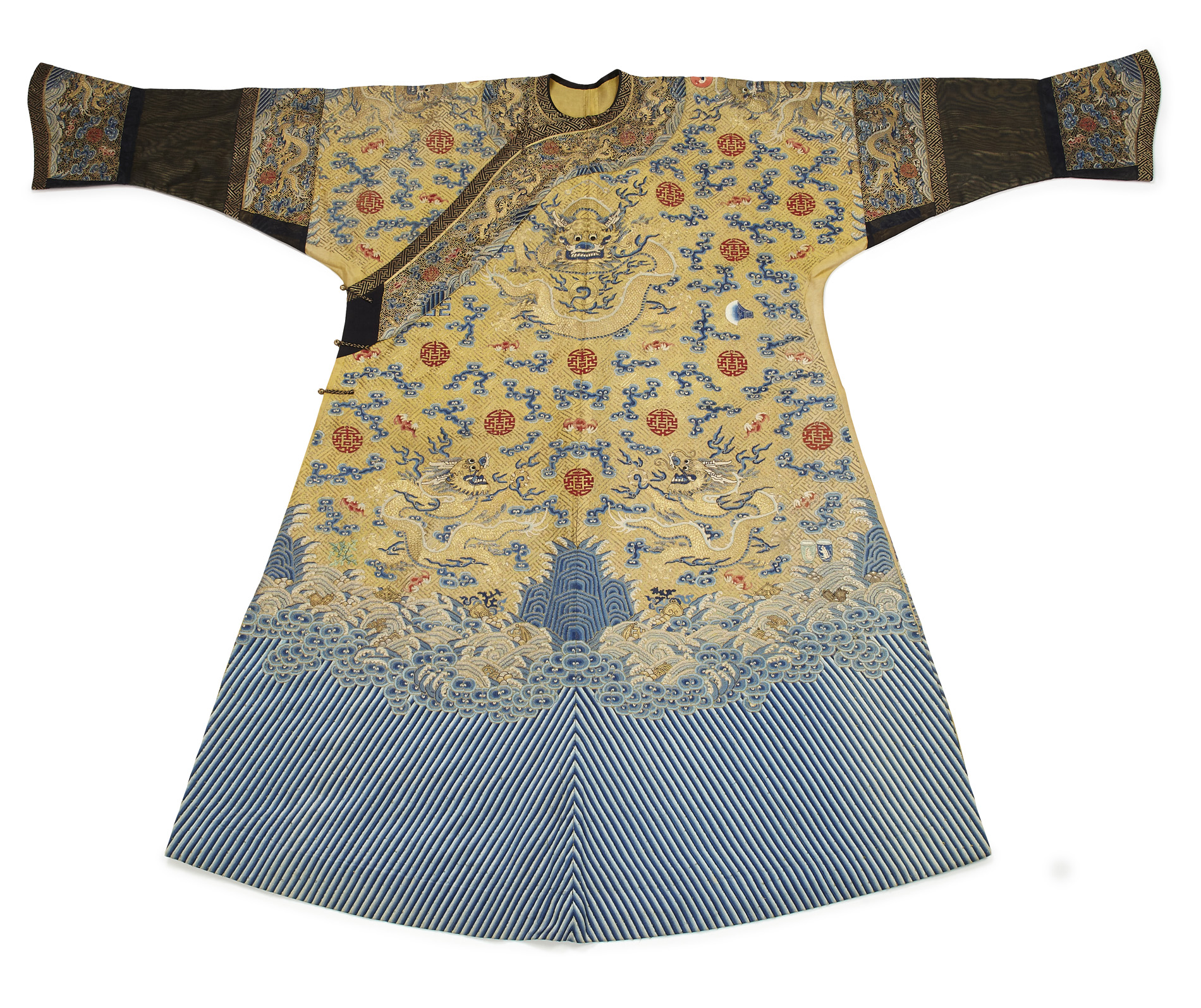
RARE DOWAGER EMPRESS CIXI IMPERIAL TWELVE-SYMBOL FESTIVE SUMMER 'DRAGON' ROBE (LONG PAO)
LATE QING DYNASTY
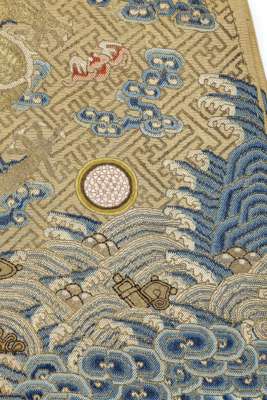
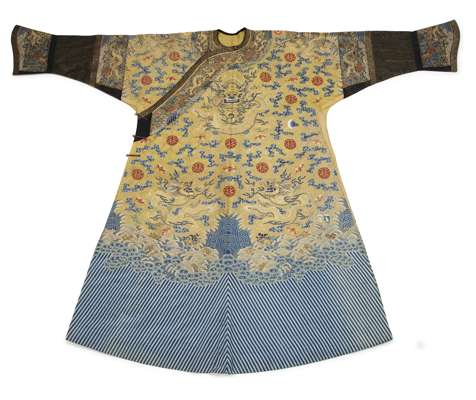
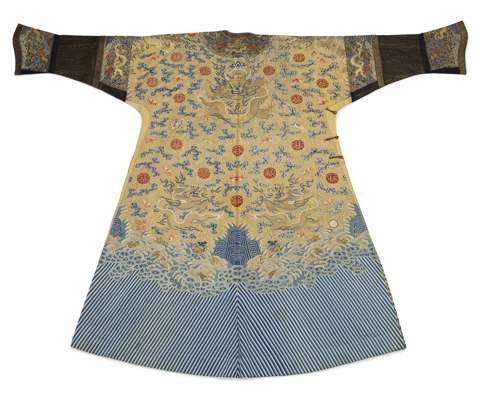
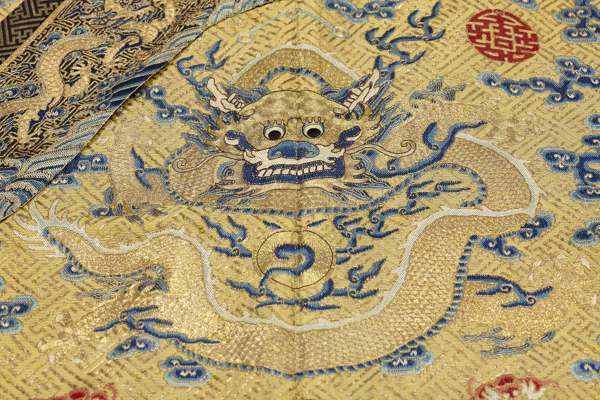
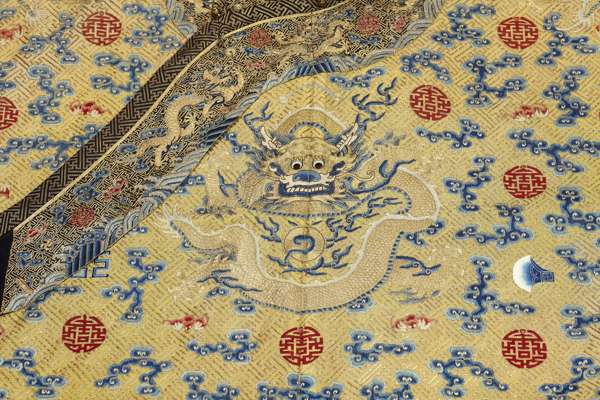
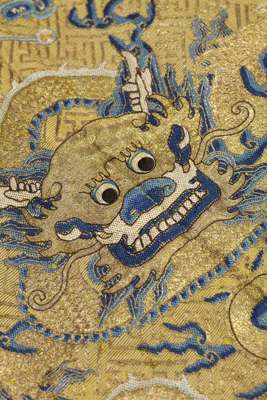
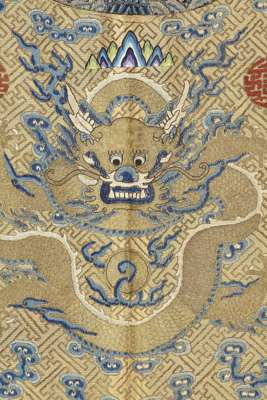
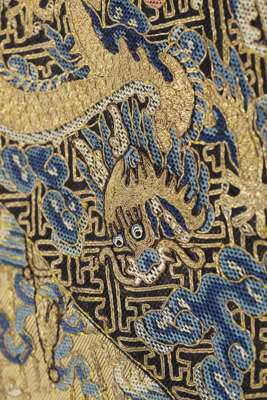


















Auction: 4 June 2014 at 11:00 BST
Description
worked in gold and silver metallic thread on a gold gauze ground, embroidered with the Twelve Symbols of Imperial Authority and nine five-clawed dragons above blue standing waves at the hem, the gold silk and black gauze sleeves ending in embroidered horseshoe cuffs, with gold silk lining
Footnote
Provenance:
Collection of Leonard Gow, Glasgow, acquired early 20th century
Thence by family descent
Note: The Twelve Symbols of Imperial Authority were rooted in ancient customs and their origination is unclear. Each symbol had a specific meaning and when appearing together represented the emperor's authority and unquestionable sovereignty. They are the Sun, Moon, Constellation, fu symbol, Dragon, Axe-head, Flowery Creature, Sacrificial Vessels, Water Plant, Flames, Grain, and Rock. Their placement on imperial robes was strictly regulated as established by the Qianlong emperor in the 18th century. While some members of the imperial family were allowed to wear garments embroidered with combinations of the Twelve Symbols, only the Emperor wore garments displaying all of them. This strict adherence to custom relaxed towards the end of the Qing Dynasty, and it is known that the Empress Dowager Cixi, who named herself regent and essentially ruled China during the Tongzhi and Guangxu Emperor's reigns, wore robes bearing the twelve symbols. It can be assumed that the present lot, which is a woman's robe, was designed for her use.
Literature: See Gary Dickinson & Linda Wrigglesworth, Imperial Wardrobe, Ten Speed Press, Berkeley, California, 2000; Wilson Ming, Imperial Chinese Robes, V&A Publishing, London, 2010.

























